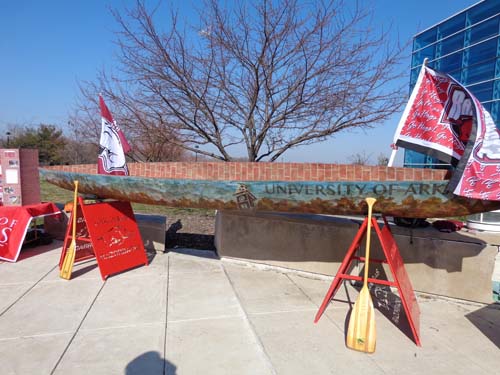
A team of civil engineering students has spent the last eight months figuring out how to make a canoe out of concrete. In April, they entered their canoe in the American Society of Civil Engineers’ 2013 Midcontinent Regional Concrete Canoe Competition at the Southern Illinois University-Edwardsville. The University of Arkansas team received third place in the oral presentation portion of the competition, and ninth place overall.
Making a functional canoe out of concrete is a complicated process. First, the team had to design a concrete mixture that would be lighter than water. Concrete is composed of aggregate — some type of solid, chunky material — held together with cement. Traditional concrete uses rocks or gravel as aggregate, but for their canoe, the students used glass beads, which were held together with a mixture of cement and polypropelene fibers. They used the laboratory facilities at the Engineering Research Center to test their mix design. “All of it in combination is lighter than you would normally expect,” explained team captain Christine McAlpine.
The team also designed the shape of the canoe, which can affect how well the canoe floats, as well as its speed. In order to come up with the best possible design, the students used 3D structural analysis, combined with a little trial and error based on their previous experience. For example, they made this year's canoe deeper than last year’s, which had trouble staying afloat.
After they had a final design for the shape of the canoe, the students made a mold, cutting it out of foam by hand. They poured the concrete over the mold and let it cure for a week. Then they painted their canoe and performed a float test.
At the competition, the team turned in a design paper and made an oral presentation about their approach to creating the canoe. They were also judged on the appearance of their canoe and how well it floated. The competition involved several canoe races. McAlpine noted that their canoe didn’t tip, leak or sink at all during the races. “We made a really solid canoe, which was really cool,” she said. “We all worked so hard on it. There were lots of late nights. I couldn’t praise my team and their dedication more.”
Contacts
Camilla Medders, director of communications
College of Engineering
479-575-5697, camillam@uark.edu